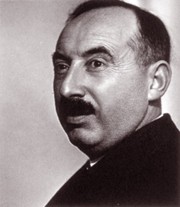
“[…] for his works ‘Experiments on hydromechanics and haemodynamics’ and ‘An introduction to the mechanics of circulation’. Dr Müller’s work was not only of theoretical value, it also provided medical practitioners with more accurate methods of measuring pulse rates, which led to more reliable diagnostic and prognostic conclusions and therefore promoted the treatment of heart conditions.”
M. unternahm mathematisch-physikalische Berechnungen und Messungen, um den Gesetzmässigkeiten von bewegten Flüssigkeiten auf die Spur zu kommen. Seine Untersuchungen setzten sich zusammen aus mathematischen Deduktionen und Versuchen mit einem Schlauchsystem, die er mit Messungen an Tieren verglich. Mit seiner dynamischen Pulsuntersuchung bestimmte M. drei vom Gefässdurchmesser unabhängige Richtgrössen, was vor allem von Pathologen als bedeutsame Leistung gewürdigt wurde. Als besonders verdienstvoll hervorgehoben wurde die Tatsache, dass M. die Experimente in seinem privaten Labor neben seiner Tätigkeit als praktizierender Arzt durchführte.

